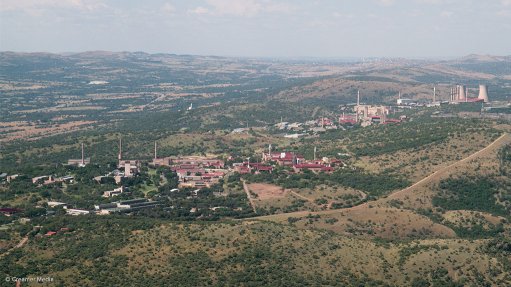
Photo by: Duane Daws
South Africa and Australia have moved to boost output of molybdenum-99 (Mo-99) as construction of a large-scale radiopharmaceuticals production facility at the Australian Nuclear Science and Technology Organisation’s (Antso’s) Lucas Heights campus in Sydney gets the thumbs up.
Australia’s national nuclear research and development organisation, which teamed up with South Africa’s NTP Radioisotopes in 2012, planned to construct an export-scale nuclear-medicine manufacturing plant, based on NTP's intellectual property and technology, to deliver life-saving nuclear medicines to heart and cancer patients across the world.
The new multilevel 4 250 m2 facility would likely replace the current Building 54 operation where 85% of the nuclear medicines – used by one in two Australians in their lifetime – were produced.
As the aging facility would reach the end of its initial design life in 2017, design work for the new ramped-up facility was started in February 2014, with construction scheduled for completion in early 2016, enabling Australia to scale up production to meet much of the world’s Mo-99 needs.
Mo-99, which is primarily used for diagnosis of heart disease and cancers, was used by an estimated 45-million people worldwide each year, with 550 000 people in Australia being diagnosed using the medicine.
By using radioisotopes produced from the Safari-1 Reactor at NTP’s parent company, State-owned South African Nuclear Energy Corporation of South Africa’s (Necsa’s) Pretoria facility, and Australia’s Opal reactor, together, the two countries could produce Mo-99 on a commercial scale using an all-low enriched uranium process.
South Africa was the first country to successfully implement commercial-scale low enriched uranium-based Mo-99 – a process meant to replace the Mo-99 produced in reactors fuelled by highly enriched uranium – in 2009/10.
"We are proud that a purely South African technological advancement has contributed so significantly to nuclear nonproliferation efforts, while simultaneously enhancing the lives of millions of patients benefitting from the use of nuclear medicine,” NTP MD Don Robertson said.
Further, with the “imminent” closure of certain large Mo-99 production facilities in Canada and Europe, the partnership between South Africa and Australia, inked in 2012, had emerged at a “critical time” for nuclear medicine provision, Necsa CEO Phumzile Tshelane said on Friday.
Last week, the Australian Radiation Protection and Nuclear Safety Agency issued a licence to Antso to prepare a site and construct the controlled facility at its Lucas Heights Science and Technology Centre.
In January, construction, mining contracting and property development group Watpac secured an A$83-million contract to design and construct the Mo-99 facility.
The Mo-99 facility would include special shielded cells for processing, which ensured operator safety; process control and building monitoring systems; a truck bay and crane for deliveries, dispatch and removing waste; a plant room housing main switchboards, plant and equipment; and systems to ensure gaseous emissions were safely controlled.